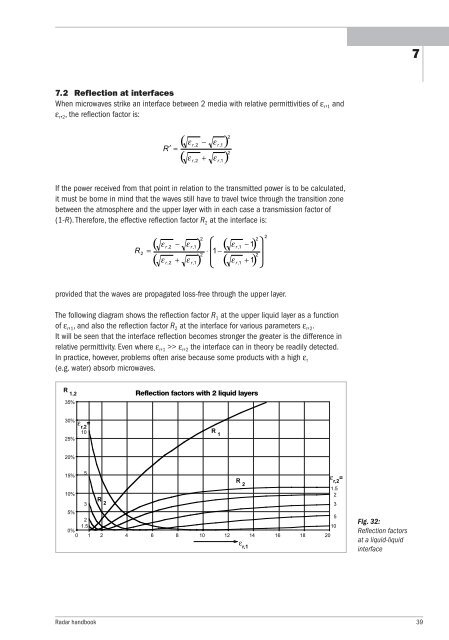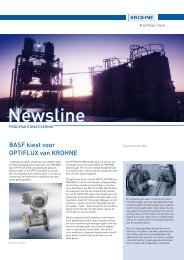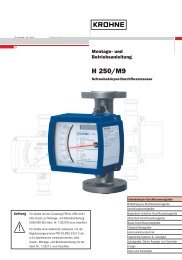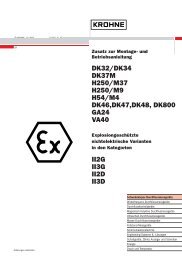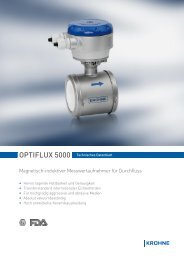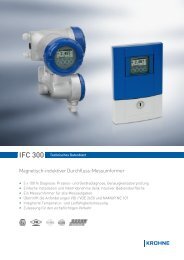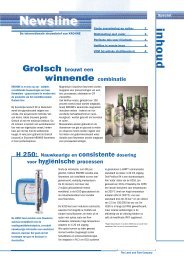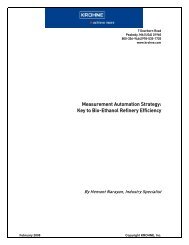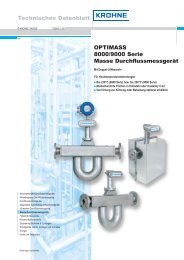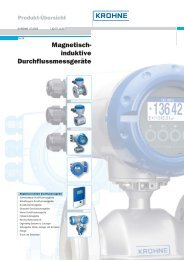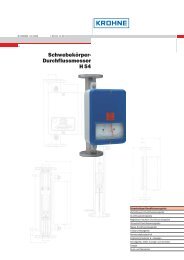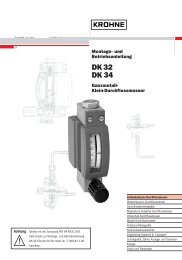Radar Technology for Level Gauging - Krohne
Radar Technology for Level Gauging - Krohne
Radar Technology for Level Gauging - Krohne
You also want an ePaper? Increase the reach of your titles
YUMPU automatically turns print PDFs into web optimized ePapers that Google loves.
3. <strong>Radar</strong>-Füllstandsmesssysteme<br />
7.2 Reflection at interfaces<br />
When microwaves strike an interface between 2 media with relative permittivities of ε r, 1 and<br />
ε r, 2, the reflection factor is:<br />
If the power received from that point in relation to the transmitted power is to be calculated,<br />
it must be borne in mind that the waves still have to travel twice through the transition zone<br />
between the atmosphere and the upper layer with in each case a transmission factor of<br />
(1-R). There<strong>for</strong>e, the effective reflection factor R 2 at the interface is:<br />
provided that the waves are propagated loss-free through the upper layer.<br />
The following diagram shows the reflection factor R 1 at the upper liquid layer as a function<br />
of ε r, 1, and also the reflection factor R 2 at the interface <strong>for</strong> various parameters ε r, 2.<br />
It will be seen that the interface reflection becomes stronger the greater is the difference in<br />
relative permittivity. Even where ε r, 1 >> ε r, 2 the interface can in theory be readily detected.<br />
In practice, however, problems often arise because some products with a high ε r<br />
(e.g. water) absorb microwaves.<br />
Reflection factors with 2 liquid layers<br />
Fig. 32:<br />
Reflection factors<br />
at a liquid-liquid<br />
interface<br />
<strong>Radar</strong> handbook 39<br />
7


